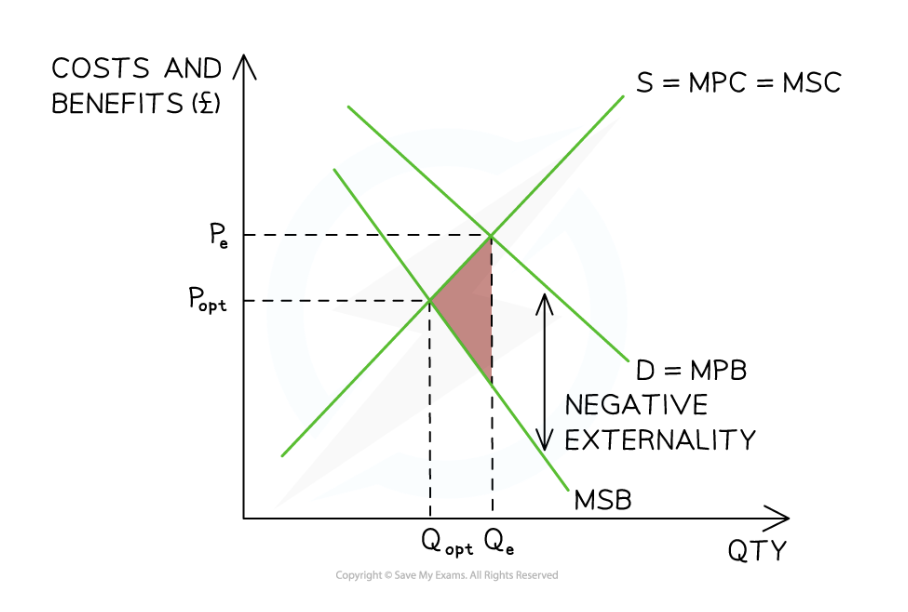The existence of negative externalities in consumption results in a misallocation of resources. This is because at the free market level of output the
A. The marginal social benefit exceeds the marginal social cost
B. The marginal private cost equals the marginal social cost.
C. The marginal social benefit is less than the marginal social cost
D. The marginal social cost is less than the marginal private benefit
Answer
C. The marginal social benefit is less than the marginal social cost
The free market allocates resources at the private optimum as consumers fail to take into account the negative externalities from consumption, this is where the MPB = MSC
The market equilibrium leads to a misallocation of resources, as it fails to account for the negative externalities, resulting in overconsumption of the good or service. The social cost of consumption will be higher than the social benefit (the benefit is only to the private individual consuming the good/service), therefore MSB < MSC



